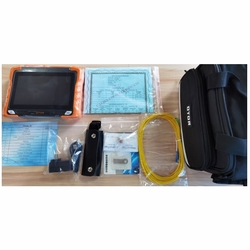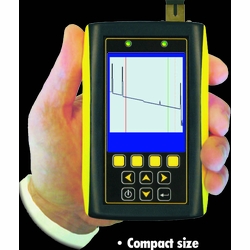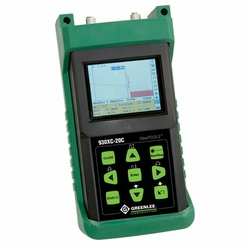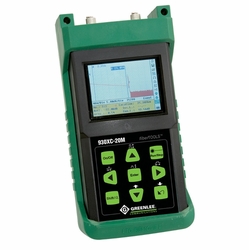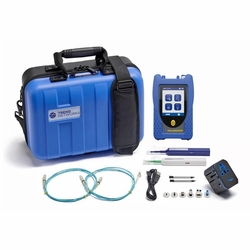Product Description
Owl Optical Wavelength Laboratories Wto-M13 Owltrek 1300Nm Multimode Otdr New
**Descripttion:
-Upholding Owl�S Commitment To High-Quality, Yet Affordable, Fiber Optic Test Equipment, The Owltrek Otdr From Owl Optical Wavelength Laboratories S Enables Fiber Optic Professionals To Quickly And Easily Troubleshoot And Locate Optical Faults In Singlemode Fibers.
-The Owltrek Is Truly A Hand-Held Unit, Being One Of The Smallest Otdrs On The Market Today - Easily Able To Fit Into A Shirt Pocket - Yet Having Capabilities Of Other Otdrs Costing Thousands Of Dollars More.
-Optical Fiber Traces Are Displayed On A High-Resolution Color Lcd Display Which Implements State-Of-The-Art Display Technology To Allow The Otdr�S High-Resolution Color Lcd Display To "Flip" Between Portrait Or Landscape Mode Automatically Simply By Rotating The Device 90�. By "Flipping" From Portrait To Landscape, The User Sees A Wider Viewing Area, Displaying More Trace Information On The Highresolution Color Lcd, And Allowing For Greater Viewing Detail.
-Important Otdr Trace Parameters Such As Pulse Width, Index Of Refraction, And Data Point Averaging Are Fully User-Configurable, And Are Accessible Through An Intuitive Menu System. A Minimum Of 65 Traces Using The Longest Trace Distance Can Be Stored In The Owltrek�S Internal Memory.
-Powering The Owltrek Is A Re-Chargeable Lithium-Polymer Battery That Allows For Up To 20 Hours Of Normal Usage.
-The Owltrek Is Equally Suited To Testing Singlemode Fibers In Many Test Environments, Including Lan, Man, Wan, Ftth, Telco, Catv, Manufacturing, And Laboratory.
**Performance Expectations And Limitations:
Reflective Events:
-Fault Location:The Main Function Of The Owltrek Otdr Is To Detect The Presence Of Highly Reflective Events, Otherwise Known As Fresnel Events, Such As Breaks, Shatters, Patch Panels, Or The End Of The Fiber Link. The Distance To An Event Is Shown As A Spike On The Otdr Trace, Allowing The Technician To Quickly Locate The Problem And Restore The Network.
-Fiber Length Measurement:The Owltrek Can Give The Operator A General Idea Of The Length Of The Optical Fiber By Placing The Cursors At The First And Last Reflective Events, Although The Last Reflective Event Is Not Guaranteed To Be The End Of The Fiber. For Example, A Severe Enough Break Mid-Span Could Prevent The Otdr From Detecting Other Events Beyond The Break, Or The Otdr Trace Could Show Echoes Or Ghosts Of Previous Fresnel Events.
Backscatter Events:
-Backscatter Events: The Owltrek Has Some Ability To Locate And Measure Backscatter Events. Tweaking Pulse-Width And Averaging Settings May Enhance The Owltrek�S Ability To Detect Backscatter Events. However, Even With Optimal Settings, Low Loss Backscatter Events Will Become Less Detectable As The Event Gets Farther Away From The Beginning Of The Fiber, Especially On Longer Fibers.
-Backscatter Events Are Also More Difficult To Measure And Interpret. Proper Cursor Placement Is Vital To The Accurate Measurement Of Backscatter Events. Only Individuals With Otdr Training And Expertise Should Attempt Backscatter Event Measurement. Interpreting Otdr Traces Will Be Covered In More Detail Later In This Manual.
-Attenuation Measurement:Backscatter Can Be Used To Measure The Attenuation (Or Loss) Of Certain Sections Of An Optical Fiber By Placing The Cursors At The Beginning And End Of The Segment Of Fiber To Be Measured.Read More

 Warning: This product can expose you to chemicals, which are known to the State of California to cause cancer and birth defects or other reproductive harm. For more information, go to www.P65Warnings.ca.gov
Warning: This product can expose you to chemicals, which are known to the State of California to cause cancer and birth defects or other reproductive harm. For more information, go to www.P65Warnings.ca.gov

